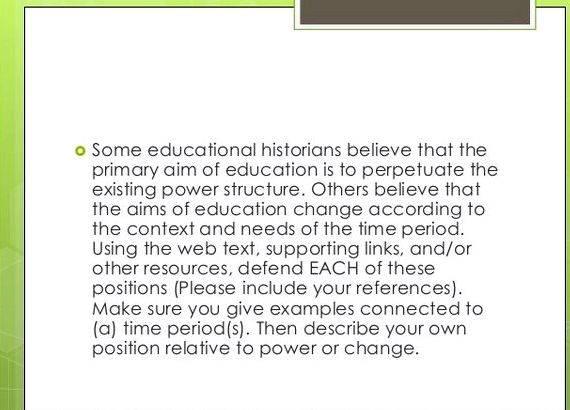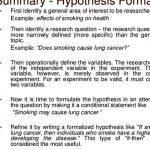What is a Teaching Philosophy Statement?
A teaching philosophy statement is a narrative that includes:
- your conception of teaching and learning
- a description of how you teach
- justification for why you teach that way
The statement can:
- demonstrate that you have been reflective and purposeful about your teaching
- communicate your goals as an instructor and your corresponding actions in the classroom
- point to and tie together the other sections of your portfolio
What is the purpose of a Teaching Philosophy Statement?
You generally need a teaching statement to apply for an academic position. A teaching statement:
- conveys your teaching values, beliefs, and goals to a broader audience
- provides a set of criteria and/or standards to judge the quality of your teaching
- provides evidence of your teaching effectiveness
Components of a Teaching Philosophy Statement
- educational purpose and learning goals for students
- your teaching methods
- methods for assessing students’ learning
- assessment of teaching
You also may include:
- a list of courses you have taught
- samples of course syllabi
- teaching evaluations
- letters of recommendation
- a video of a class you have taught (asked for by some universities)
Teaching values, beliefs, and goals
You should consider what you believe is the end goal or purpose of education:
- content mastery
- engaged citizenry
- individual fulfillment
- critical thinking
- problem solving
- discovery and knowledge generation
- teamwork
- self-directed learning
- experiential learning
Where can you find your teaching philosophy?
- a syllabus (assignments, format, content, expectations, texts, assignments, grading and assessment)
- in-classroom environment (diversity of methods, level of interaction, quality of feedback, intercultural sensitivity)
- connection to institutional mission and disciplinary trends
What criteria are used to judge your teaching?
- student-teaching roles and responsibilities
- student-teacher interaction
- inclusiveness
- teaching methods
- assessment of teaching
- assessment of learning
How do you provide evidence of your teaching effectiveness?
- peer review
- students comments
- ratings
- portfolio
- syllabi
- teaching activities
Writing guidelines:
- There is no required content, set format, or right or wrong way to write a teaching statement. That is why writing one can be challenging.
- Make the length suit the context. Generally, they are 1–2 pages.
- Use present tense and the first person, in most cases.
- Avoid technical terms and use broadly understood language and concepts, in most cases. Write with the audience in mind. Have someone from your field guide you on discipline-specific jargon and issues to include or exclude.
- Include teaching strategies and methods to help people “see” you in the classroom. Include specific examples of your teaching strategies, assignments, discussions, etc. Help them to visualize the learning environment you create and the exchanges between you and your students.
- Make it memorable and unique. The search committee is seeing many of these documents—What is going to set you apart? What will they remember? Your teaching philosophy will come to life if you create a vivid portrait of yourself as a person who is intentional about teaching practices and committed to your career.
“Own” your philosophy
Don’t make general statements such as “students don’t learn through lecture” or “the only way to teach is with class discussion.” These could be detrimental, appearing as if you have all of the answers.

Instead, write about your experiences and your beliefs. You “own” those statements and appear more open to new and different ideas about teaching. Even in your own experience, you make choices about the best teaching methods for different courses and content: sometimes lecture is most appropriate; other times you may use service-learning, for example.
Teaching Philosophy Statement dos and don’ts:
- Don’t give idyllic BUT empty concepts
- Don’t repeat your CV
- Do research on the teaching institution and disciplinary trends
- Do keep it short (1–2 pages)
- Do provide concrete examples and evidence of usefulness of teaching concepts
- Do discuss impact of methods, lessons learned, challenges and innovations—how did students learn?
- Do discuss connections between teaching, research, and service
Answer these questions to get started:
- The purpose of education is to________.
- Why do you want to teach your subject?
- Students learn best by______________.
- When you are teaching your subject, what are your goals?
- The most effective methods for teaching are___________.
- I know this because__________________.
- The most important aspects of my teaching are______________.
More information on Teaching Philosophy Statements
“Writing a Statement of Teaching Philosophy for the Academic Job Search,” from the University of Michigan: crlt.umich.edu/publinks/CRLT_no23.pdf
Electronic Portfolios
The Electronic Portfolio is a way to showcase your accomplishments, skills, and philosophy on the Internet. You can write a personal profile; post your CV, resume, Research Statement, Teaching Philosophy Statement; give links to published articles, work samples, etc.; and post photos and other images. You can continually update it as you progress through your studies and your career. It is readably available for potential employers to see.
Help at the Center for Teaching Excellence
The course ALS 6015, “The Practice of Teaching in Higher Education” teaches graduate students how to prepare teaching portfolios.
You may schedule a one-on-one appointment for help in preparing your Teaching Philosophy Statement.
For graduate TAs considering academic positions in higher education, these programs prepare you to become an excellent teacher. You learn the art and science of teaching through coursework, mentorship, research, and electronic portfolio development. You’ll receive a small stipend and a certificate after completing program requirements. See: cte.cornell.edu/programs-services/grads-future-educators-tas/teaching-and-research-fellowships.html






 Writing a letter to your apartment manager
Writing a letter to your apartment manager Writing a good research hypothesis
Writing a good research hypothesis Development assistance committee report writing
Development assistance committee report writing Writing about yourself that was a success
Writing about yourself that was a success Romulus my father summary writing
Romulus my father summary writing





